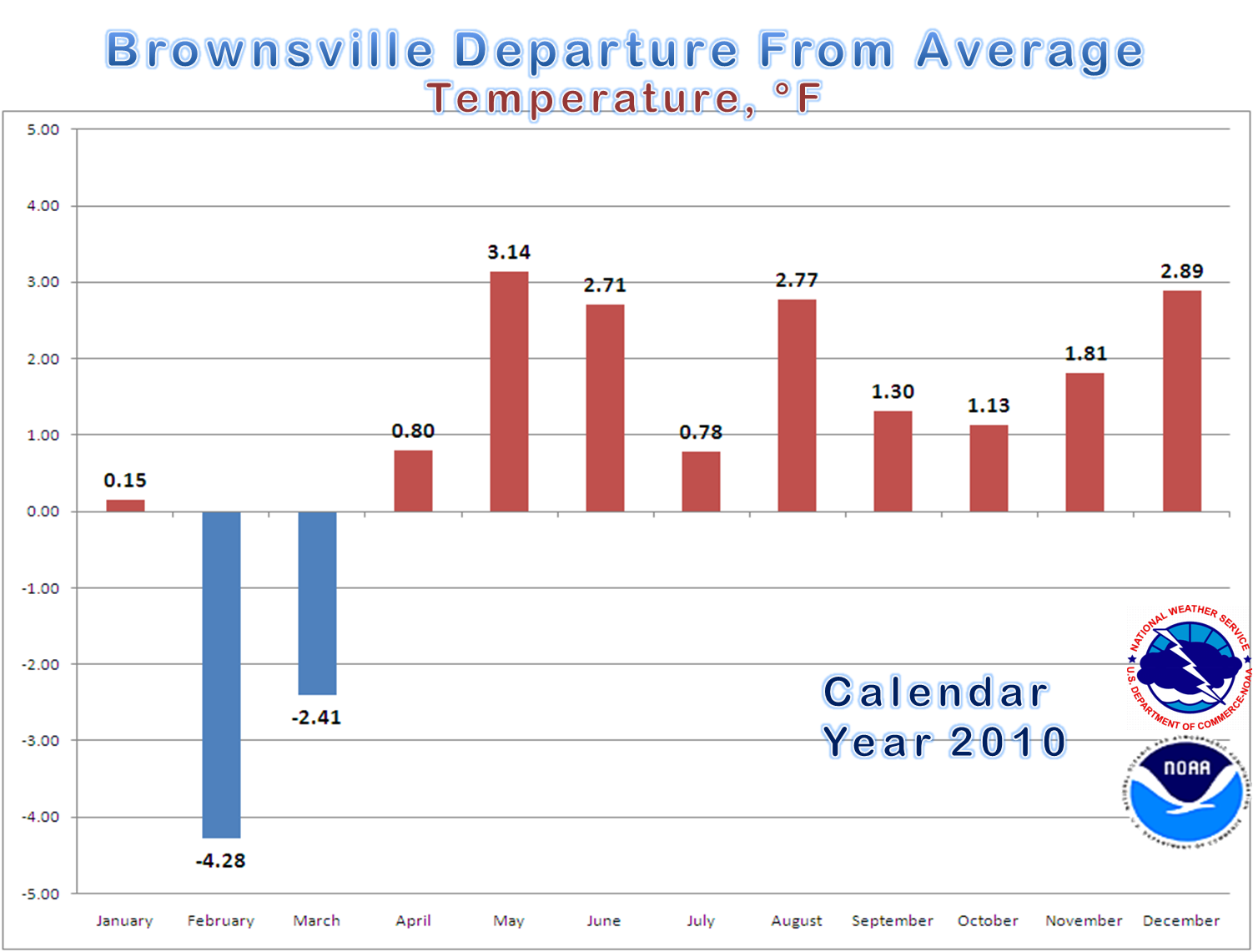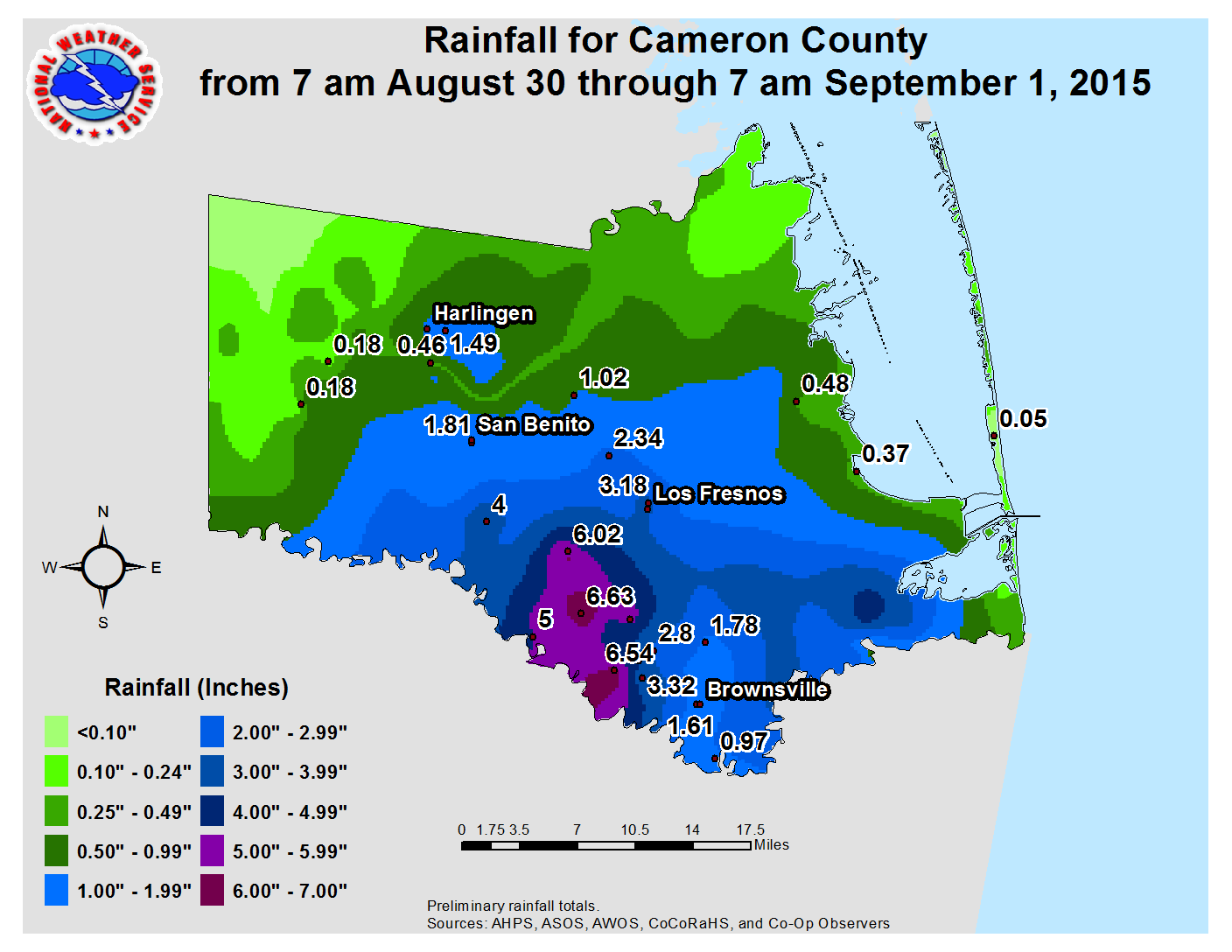Brownsville Texas Weather: A Comprehensive Guide To Understanding The Climate
Brownsville Texas weather is known for its unique subtropical climate, offering warm temperatures and relatively mild winters. Located at the southernmost tip of Texas, Brownsville experiences a weather pattern that is distinct from much of the United States. With its proximity to the Gulf of Mexico, this region enjoys a mix of sunny days, high humidity, and occasional tropical storms. Whether you're planning a visit, considering a move, or simply curious about the local climate, understanding Brownsville Texas weather is essential for making informed decisions.
Throughout the year, Brownsville enjoys an average of 285 sunny days, making it an appealing destination for outdoor enthusiasts. However, the weather here can also bring challenges, such as heavy rainfall during hurricane season and high humidity levels that can make summer days feel even warmer. These factors contribute to the area's vibrant ecosystem and agricultural productivity, but they also require residents and visitors to adapt to the subtropical conditions.
From its balmy winters to its hot and humid summers, Brownsville Texas weather plays a significant role in shaping daily life in the region. Whether you're interested in the seasonal weather patterns, historical climate data, or tips for staying comfortable in this unique environment, this guide will provide you with valuable insights. Let’s dive into the details and explore everything you need to know about Brownsville's weather.
Read also:Discover The World Of Girthmaster And Miaz Videos A Comprehensive Guide
Table of Contents
- What Makes Brownsville Texas Weather Unique?
- How Does Brownsville Texas Weather Change with the Seasons?
- Brownsville Texas Weather and Hurricane Season
- Is Brownsville Texas Weather Suitable for Outdoor Activities?
- How to Stay Comfortable in Brownsville Texas Weather?
- Historical Weather Patterns in Brownsville Texas
- Brownsville Texas Weather and Its Impact on Local Life
- What Are the Best Months to Visit Brownsville Texas?
- Brownsville Texas Weather and Agriculture
- Frequently Asked Questions About Brownsville Texas Weather
What Makes Brownsville Texas Weather Unique?
Brownsville Texas weather stands out due to its subtropical climate, which is characterized by warm temperatures year-round. Unlike many parts of the United States, Brownsville rarely experiences freezing temperatures, with average winter lows hovering around 50°F (10°C). This makes it an attractive destination for snowbirds and retirees looking to escape colder climates.
Another defining feature of Brownsville Texas weather is its proximity to the Gulf of Mexico. This geographical factor contributes to high humidity levels, especially during the summer months. The combination of heat and humidity can make the air feel much warmer than the actual temperature, a phenomenon known as the "heat index." However, the coastal breeze often provides some relief, particularly in the evenings.
Why Is Brownsville Texas Weather Ideal for Certain Activities?
The mild winters and warm summers in Brownsville make it an excellent location for outdoor activities such as birdwatching, fishing, and hiking. The region's weather supports a rich biodiversity, attracting nature lovers from around the world. Additionally, the lack of harsh winters allows for year-round gardening and farming, contributing to the local economy.
How Does Brownsville Texas Weather Change with the Seasons?
Brownsville Texas weather follows a predictable seasonal pattern, with distinct changes that residents and visitors can anticipate. Understanding these patterns can help you plan your activities and prepare for the conditions you're likely to encounter.
Spring: A Time of Renewal
Spring in Brownsville is marked by gradually warming temperatures and increasing humidity. Average highs range from the mid-70s to the mid-80s Fahrenheit, making it an ideal time for outdoor exploration. The weather during this season is generally mild, though occasional rain showers are not uncommon.
Summer: Hot and Humid
Summer is the hottest and most humid season in Brownsville Texas weather. Temperatures often soar into the 90s, with humidity levels adding to the discomfort. Despite the heat, summer is also a popular time for beachgoers and water sports enthusiasts who take advantage of the nearby Gulf Coast.
Read also:1x6x8 Pressure Treated Lumber Best Prices And Deals
What Are the Challenges of Brownsville Texas Weather in Summer?
One of the main challenges of summer in Brownsville is the risk of heat-related illnesses. It's crucial to stay hydrated and avoid prolonged exposure to the sun during peak hours. Additionally, the occasional thunderstorm can bring heavy rain and lightning, so it's wise to stay informed about weather forecasts.
Brownsville Texas Weather and Hurricane Season
Hurricane season in Brownsville Texas weather typically runs from June to November, with the peak activity occurring in August and September. While not every hurricane affects the area directly, Brownsville is occasionally in the path of tropical storms and hurricanes originating in the Gulf of Mexico.
How Does Brownsville Prepare for Hurricanes?
Residents of Brownsville are well-versed in hurricane preparedness. Local authorities provide regular updates and evacuation plans when necessary. It's essential for newcomers to familiarize themselves with these procedures and have an emergency kit ready in case of severe weather events.
Is Brownsville Texas Weather Suitable for Outdoor Activities?
Despite the heat and humidity, Brownsville Texas weather offers plenty of opportunities for outdoor enthusiasts. The region's natural beauty, including its beaches, parks, and wildlife refuges, makes it a haven for activities such as kayaking, birdwatching, and cycling.
Top Outdoor Activities in Brownsville
- Exploring the Laguna Atascosa National Wildlife Refuge
- Fishing in the Gulf of Mexico
- Hiking in the Resaca de la Palma State Park
- Enjoying the beaches of South Padre Island
What Should You Wear for Outdoor Activities in Brownsville Texas Weather?
When engaging in outdoor activities, it's important to dress appropriately for Brownsville Texas weather. Lightweight, breathable clothing is recommended, along with sunscreen and a hat to protect against the sun. Staying hydrated is also crucial, especially during the hotter months.
How to Stay Comfortable in Brownsville Texas Weather?
Living in or visiting Brownsville requires some adjustments to cope with the subtropical climate. Here are a few tips to help you stay comfortable throughout the year:
- Invest in air conditioning for your home or vehicle
- Carry a reusable water bottle to stay hydrated
- Plan outdoor activities for early mornings or late afternoons
- Use fans or dehumidifiers to manage indoor humidity
Why Is Hydration Important in Brownsville Texas Weather?
The combination of heat and humidity in Brownsville Texas weather can lead to dehydration if you're not careful. Drinking plenty of water, even if you don't feel thirsty, is essential for maintaining your health and well-being in this climate.
Historical Weather Patterns in Brownsville Texas
Understanding the historical weather patterns in Brownsville provides valuable insights into the region's climate trends. Over the years, Brownsville has experienced a consistent subtropical climate, with occasional variations due to global weather phenomena such as El Niño and La Niña.
What Are the Record Highs and Lows in Brownsville Texas Weather?
The highest recorded temperature in Brownsville was 106°F (41°C), while the lowest was 12°F (-11°C). These extremes, though rare, highlight the range of conditions that can occur in this area.
Brownsville Texas Weather and Its Impact on Local Life
The weather in Brownsville significantly influences daily life, from the types of crops grown to the local architecture. Homes in the area are often designed to maximize airflow and provide shade, while businesses adapt their hours to accommodate the heat.
How Does Brownsville Texas Weather Affect Agriculture?
The warm climate and long growing season make Brownsville an ideal location for agriculture. Crops such as citrus fruits, sugarcane, and vegetables thrive in this environment, contributing to the local economy and food supply.
What Are the Best Months to Visit Brownsville Texas?
The best time to visit Brownsville is during the spring and fall months when the weather is mild and comfortable. March through May and September through November offer pleasant temperatures and fewer crowds, making it an ideal time for sightseeing and outdoor activities.
Why Is Fall a Great Time to Visit Brownsville Texas Weather?
Fall in Brownsville brings cooler temperatures and lower humidity, creating perfect conditions for outdoor exploration. Events such as the Charro Days festival also take place during this time, adding to the appeal of visiting.
Brownsville Texas Weather and Agriculture
The agricultural industry in Brownsville benefits greatly from the region's weather. The warm temperatures and abundant sunshine allow farmers to grow a variety of crops year-round, supporting both local consumption and export markets.
What Crops Thrive in Brownsville Texas Weather?
Some of the most commonly grown crops in Brownsville include citrus fruits like oranges and grapefruits, sugarcane, and vegetables such as tomatoes and peppers. These crops are well-suited to the subtropical climate and contribute to the area's economic vitality.
Frequently Asked Questions About Brownsville Texas Weather
What Is the Average Temperature in Brownsville Texas?
The average temperature in Brownsville ranges from the mid-50s in winter to the mid-90s in summer, with humidity playing a significant role in how the weather feels.
Does Brownsville Texas Weather Include Snow?
Snow is extremely rare in Brownsville Texas weather. The region's mild winters make it an unlikely place for snowfall, though occasional cold snaps can bring frost.
How Does Brownsville Texas Weather Compare to Other Parts of Texas?
Compared to other parts of Texas, Brownsville Texas weather is milder in winter and more humid in summer. The coastal influence moderates temperatures, making it a unique climate zone within the state.
What Should Visitors Know About Brownsville Texas Weather Before Traveling?
Visitors should be prepared for warm temperatures and high humidity, especially during the summer months. Packing lightweight clothing and staying hydrated are essential for a comfortable trip.
Article Recommendations

